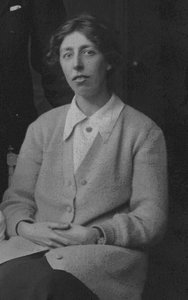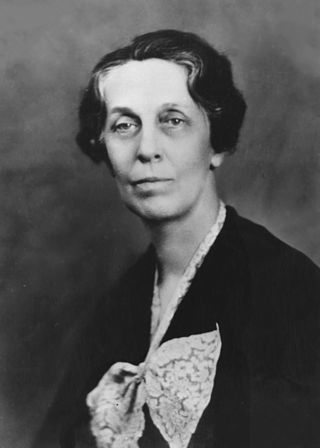Related Research Articles

Hermann Emil Louis Fischer was a German chemist and 1902 recipient of the Nobel Prize in Chemistry. He discovered the Fischer esterification. He also developed the Fischer projection, a symbolic way of drawing asymmetric carbon atoms. He also hypothesized lock and key mechanism of enzyme action. He never used his first given name, and was known throughout his life simply as Emil Fischer.

Rhodamine is a family of related dyes, a subset of the triarylmethane dyes. They are derivatives of xanthene. Important members of the rhodamine family are Rhodamine 6G, Rhodamine 123, and Rhodamine B. They are mainly used to dye paper and inks, but they lack the lightfastness for fabric dyeing.

Benzofuran is the heterocyclic compound consisting of fused benzene and furan rings. This colourless liquid is a component of coal tar. Benzofuran is the "parent" of many related compounds with more complex structures. For example, psoralen is a benzofuran derivative that occurs in several plants.
Dorothy Jordan Lloyd was an early protein scientist who studied the interactions of water with proteins, particularly gelatin. She was also Director of the British Leather Manufacturers' Research Association. She was the first to propose that the structure of globular proteins was maintained by hydrogen bonds, an idea championed later by Linus Pauling and others.
Vibrational circular dichroism (VCD) is a spectroscopic technique which detects differences in attenuation of left and right circularly polarized light passing through a sample. It is the extension of circular dichroism spectroscopy into the infrared and near infrared ranges.
Animesh Chakravorty FNA, FASc is a Bengali Indian inorganic chemist. In 1975, he was awarded the Shanti Swarup Bhatnagar Prize for Science and Technology in chemistry by the Council of Scientific and Industrial Research.
Niels Janniksen Bjerrum was a Danish chemist.

Muriel Wheldale Onslow was a British biochemist, born in Birmingham, England. She studied the inheritance of flower colour in the common snapdragon Antirrhinum and the biochemistry of anthocyanin pigment molecules. She attended the King Edward VI High School in Birmingham and then matriculated at Newnham College, Cambridge in 1900. At Cambridge she majored in botany. Onslow later worked within Bateson's genetic group and then Frederick Gowland Hopkins biochemical group in Cambridge, providing her with expertise in biochemical genetics for investigating the inheritance and biosynthesis of petal colour in Antirrhinum. She was one of the first women appointed as a lecturer at Cambridge, after moving to the Biochemistry department.

Emma Perry Carr was an American spectroscopist and chemical educator. Her work on unsaturated hydrocarbons and absorption spectra earned her the inaugural Francis P. Garvan Medal from the American Chemical Society in 1937.

Ida Freund was the first woman to be a university chemistry lecturer in the United Kingdom. She is known for her influence on science teaching, particularly the teaching of women and girls. She wrote two key chemistry textbooks and invented the idea of baking periodic table cupcakes, as well as inventing a gas measuring tube, which was named after her.

Akuammicine is a monoterpene indole alkaloid of the Vinca sub-group. It is found in the Apocynaceae family of plants including Picralima nitida, Vinca minor and the Aspidosperma.
Ida Smedley Maclean was an English biochemist and the first woman admitted to the London Chemical Society.

Sibyl Taite Widdows (1876–1960) was a British Scientist and member of the Chemistry department at the London School of Medicine for Women for 40 years.
Mildred May Gostling, also published under her married name Mildred Mills, was an English chemist who completed research in carbohydrate chemistry. She was one of the nineteen signatories on a letter from professional female chemists to the Chemical Society requesting that women be accepted as Fellows to the Society.
Mary Beatrice Thomas was a lecturer in chemistry at Royal Holloway College and later at Girton College, Cambridge where she was also Director of Studies. She was a noted educator, co-editing a chemistry textbook written by Ida Freund, as well as being one of the nineteen signatories to a petition to the Chemical Society arguing for admission of women as Fellows of the Society.
Katherine Alice Burke was a British chemist and one of the nineteen signatories of the 1904 petition to the Chemical Society.
Mary Locke Petermann was an American cellular biochemist known for her key role in the discovery and characterization of animal ribosomes, the molecular complexes that carry out protein synthesis. She was the first woman to become a full professor at Cornell University's medical school.
Helen H. Fielding is a Professor of physical chemistry at University College London (UCL). She focuses on ultrafast transient spectroscopy of protein chromophores and molecules. She was the first woman to win the Royal Society of Chemistry (RSC) Harrison-Meldola Memorial Prize (1996) and Marlow Award (2001).
Serena DeBeer is an American chemist. She is currently a W3-Professor and the director at the Max Planck Institute for Chemical Energy Conversion in Muelheim an der Ruhr, Germany, where she heads the Department of Inorganic Spectroscopy. Her expertise lies in the application and development of X-ray based spectroscopic methods as probes of electronic structure in biological and chemical catalysis.

Vinervine is a monoterpene indole alkaloid of the Vinca sub-group. It is a derivative of akuammicine, with one additional hydroxy (OH) group in the indole portion, hence it is also known as 12-hydroxyakuammicine.
References
- 1 2 3 4 5 Rayner-Canham, Marelene; Rayner-Canham, Geoffrey (2020). Pioneering British Women Chemists: Their Lives and Contributions. World Scientific. pp. 502–503. doi:10.1142/q0228. ISBN 978-1-78634-769-5.
- ↑ Creese, Mary R S (1991). "British Women of the Nineteenth and Early Twentieth Centuries Who Contributed to Research in the Chemical Sciences". The British Journal for the History of Science. 24 (3): 275–305. doi: 10.1017/S0007087400027370 . JSTOR 4027231. PMID 11622943.
- 1 2 Fara, Patricia (2018). A lab of one's own. Oxford University Press. p. 126. ISBN 9780198794981.
- 1 2 3 4 5 "Obituary Notes: Annie Homer". Journal of the Royal Society of Chemistry. 77: 369. 1953. Retrieved 30 June 2020.
- ↑ Homer, Annie (1907). "The Action of Aluminium Chloride on Naphthalene". Journal of the Chemical Society. 91: 1103–1114. doi:10.1039/ct9079101103.
- ↑ Homer, Annie; Purvis, John Edward (1910). "The absorption spectra of dinaphthanthracene and its hydro-derivative compared with the absorption spectra of its isomerides". Journal of the Chemical Society. 97: 1155–1158. doi:10.1039/ct9109701155.
- ↑ Shorter, John (2005). Archer, Mary D; Haley, Christopher D (eds.). Chemistry at Cambridge under George Downing Liveing. Cambridge University Press. pp. 180–181. ISBN 978-0521828734.
- ↑ Pedras, Bruno; Oliveria, Elisabete; Santos, Hugo; Rodriguez, Laura; Crehuet, Ramon; Aviles, Teresa; Luis Capelo, Jose; Lodeiro, Carlos (2009). "A new tripodal poly-imine indole-containing ligand: Synthesis, complexation, spectroscopic and theoretical studies". Inorganica Chimica Acta. 362 (8): 2627–2635. doi:10.1016/j.ica.2008.11.032.
- ↑ Li, Buyi; Guan, Zhenhong; Yang, Xinjia; Wang, Wei David; Wang, Wei; Hussain, Irshad; Song, Kunpeng; Tan, Bien; Li, Tao (2014). "Multifunctional microporous organic polymers". Journal of Materials Chemistry A. 2 (30): 11930–11939. doi:10.1039/c4ta01081g.
- ↑ Dakin, H D (1917). "Biochemistry and war problems". British Medical Journal. 1 (2947): 833–837. doi:10.1136/bmj.1.2947.833-a. PMC 2348630 . PMID 20768628.
- ↑ Homer, Annie (1916). "The concentration of antitoxic sera". Biochemical Journal. 10 (2): 280–307. doi:10.1042/bj0100280. PMC 1258707 . PMID 16742640.
- ↑ Homer, Annie (1916). "An improved method for the concentration of antitoxic sera". Journal of Hygiene. 15 (3): 388–400. doi:10.1017/s002217240000632x. PMC 2207005 . PMID 20474627.
- ↑ Cohen, Michael J (2014). Britain's Moment in Palestine: Retrospect and Perspectives, 1917-1948. Routledge. pp. 200–201. ISBN 9781138193888.